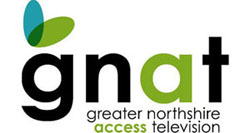Dorset school directors approve school budget

Andrew McKeever
GNAT TV News Project
DORSET — The Dorset School Board approved a proposed budget during its meeting on Wednesday, Jan. 4, one which will be put before the town’s voters during March Town Meeting. It calls for $5.478 million in total spending, a decline of 5.8 percent from last year’s budget of $5.814 million.
At the same time, Dorset residents will also be looking at a nearly 17 cent increase in their education tax rate, from about $1.44 to nearly $1.61 per $100 of assessed property value.
A change in the way the state funds for special education costs are being accounted for this year explains a part of reason for the seeming disconnect between a rising tax rate against a background of a decreasing amount of total expenditures. Last year, as part of a revision of an earlier statute, the state legislature enacted Act 148, which directed that reimbursement for special education services could be received at both school districts and supervisory unions, wherever the costs were incurred.
Excluding special education expenditures, as well as a $100,000 warned article for the school district’s building and grounds reserve fund, an “apples to apples” comparison of spending would show an increase of roughly $460,000, from the current budget passed last year of $4.357 million, to the one proposed for the coming budget year of $4.817 million.
An increase in Burr and Burton Academy’s tuition rate from $16,250 last year to $16,700 in the coming year, combined with an increase in the number of Dorset students attending there, along with a drop in the town’s common level of appraisal tate from 107.5 percent to slightly under 106 percent, were also factors placing upward pressure on the tax rate.
The common level of appraisal is a measure of the difference between the assessed value of properties and their fair market value. When the CLA, as it is often referred to, reaches 100 percent, there is parity between the two. A higher than 100 percent number indicates properties are being assessed for higher values than the real estate market says they are worth at a given moment.
In an effort to try and lower the projected tax rate increase, Dorset school directors held an extended discussion on whether to reduce the teaching faculty by one full position, reflecting a slight decline in the Dorset School’s enrollment levels. Cutting the teaching position would have saved about $67,000 in salary and benefits costs, directors were told. The school has a current enrollment of 183 students in its kindergarten – 8th grade classes, down from 196 the previous year. With a large class of 30 eighth graders graduating later this year, and a smaller kindergarten class expected, it appears likely enrollment will fall further in the coming year. But that could change, said Principal Rosanna Moran, adding that there was no way to be certain if there might be more students enrolling later in the year.
School Superintendent Jacquelyne Wilson recommended against cutting the position at this point, because the school district could find itself in the position of having to bring it back next year. She also said the school could consider a multi-age classroom structure for grades where enrollment is lower than normal in coming years if enrollment levels return to earlier levels.
Under such a scenario two class grades might be combined into one group with one teacher. The structure has been tried in the supervisory union before, including for a time at Manchester Elementary Middle School for a few years while she was principal there several years ago, Wilson said.
That had worked well and was sound educational practice, she said, adding that she didn’t see a lot of other possible solutions to easing budget pressures through salary reduction while maintaining educational quality. The problem is that it’s often a tough sell to the public, she added.
School director Jim Salsgiver said that if low enrollment numbers persisted, the school would have to explore other solutions. The mix of dropping enrollment and rising tax rates created a situation that made him uncomfortable, he said.
“I think we have to get creative and we have to figure out a way to deal with this,” he said. “At the same time, in a budget of over $5 million and a (projected) savings of $67,000, it’s not worth throwing everything into flux.”
At the same time, the landscape could change quickly, if the new proposed Taconic and Green District, proposed under Act 46 by the Northshire Merger Study Committee, wins favor with voters at town meeting.
Under that scenario, Dorset would no longer have its own budget to develop, but it would be part of a larger entity that includes Manchester, Sunderland, Danby, Mt. Tabor and the Mountain Towns Regional Education District. One potential advantage of that is that teaching resources could be shifted around to meet needs more flexibly.
Eventually, the board directors voted to unanimously approve the budget as presented. If the school district merger goes through, it marked the final time a Dorset school board would develop and approve a school budget.
Directors also dropped the tuition rate they will charge to students entering the school from $15,700 to $14,000, with the idea that the lower tuition rate might attract students from out of the district.
School board chairman David Chandler said he felt comfortable that all the fat had been squeezed out of the proposed budget and it was as “airtight as we can make it.”
“I know this is hard, and I don’t mean to sound flippant, because we are all trying to do the right thing,” he said, immediately following the 4-0 vote which approved the budget.
Voters in Dorset will get their turn during town meeting, set for March 6-7. Voters will determine the budget by Australian ballot voting on Tuesday, March 7.






